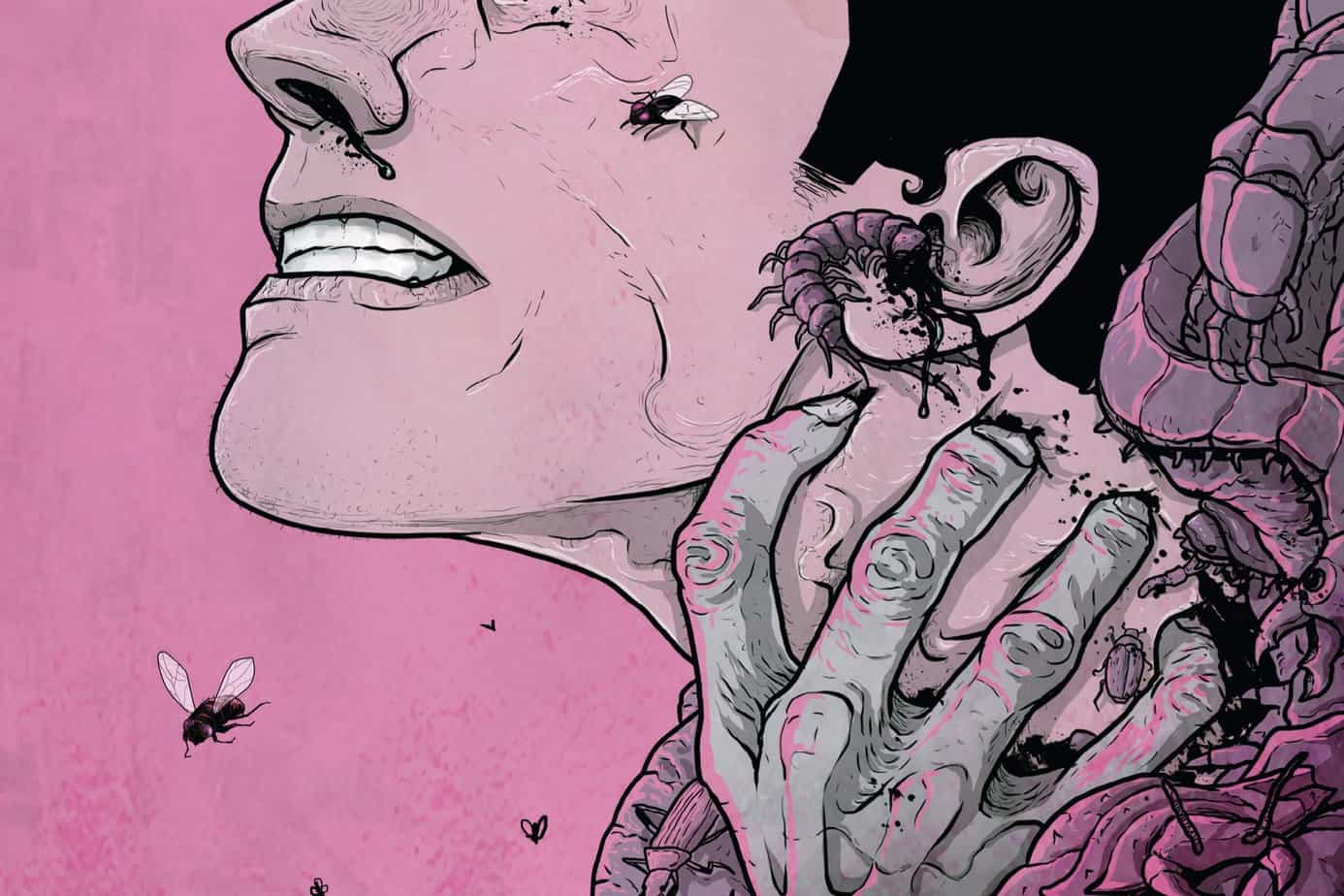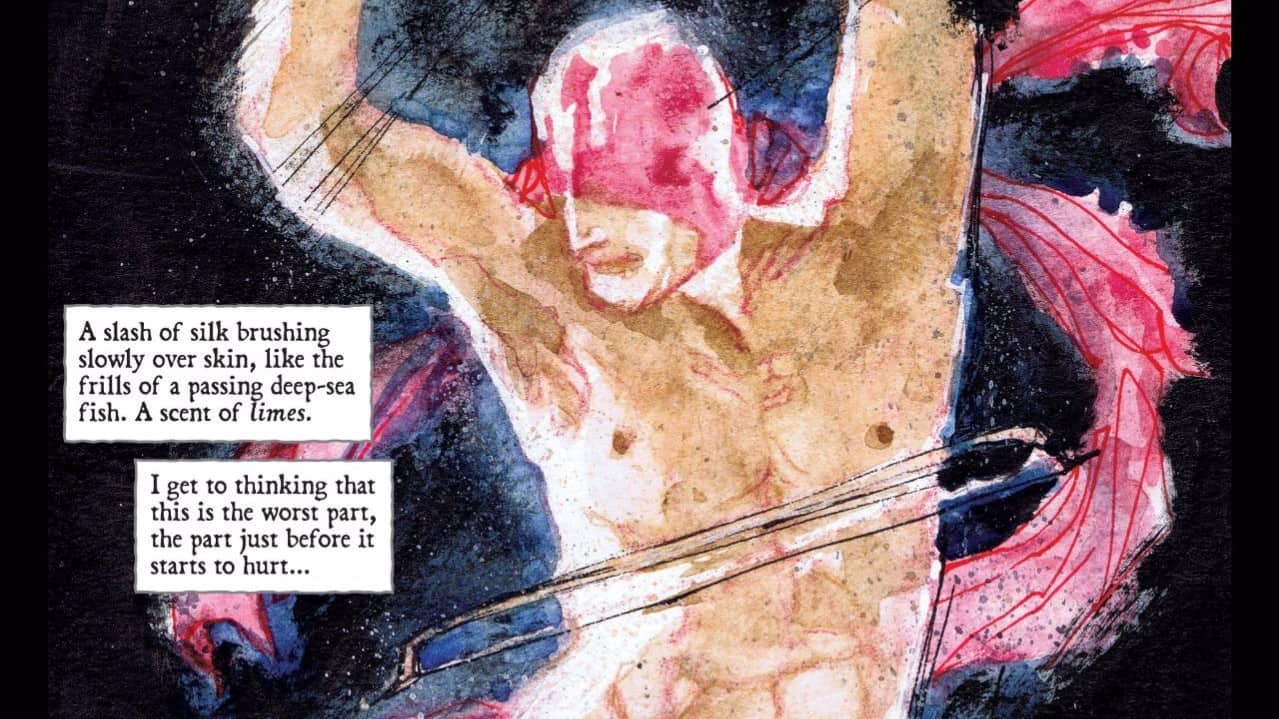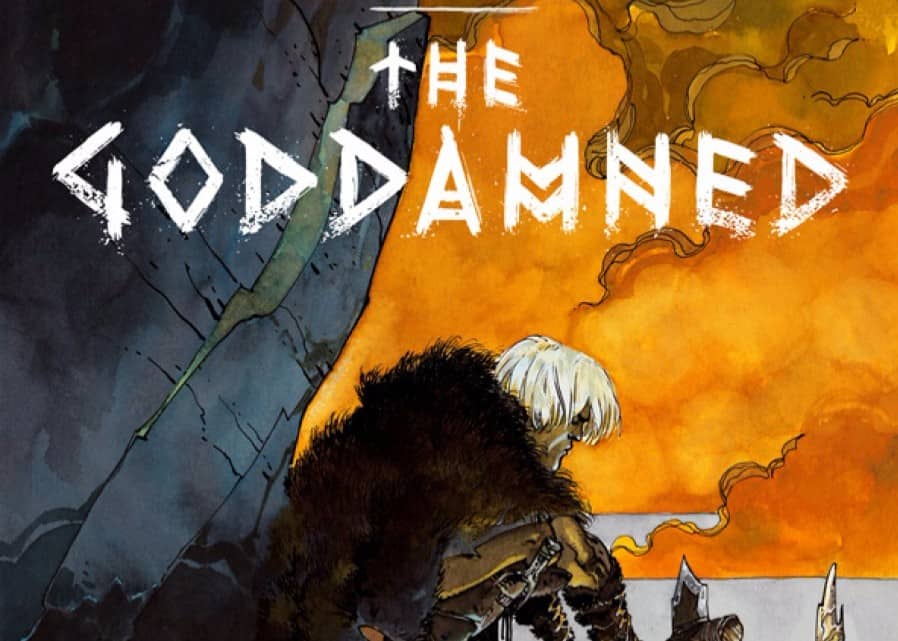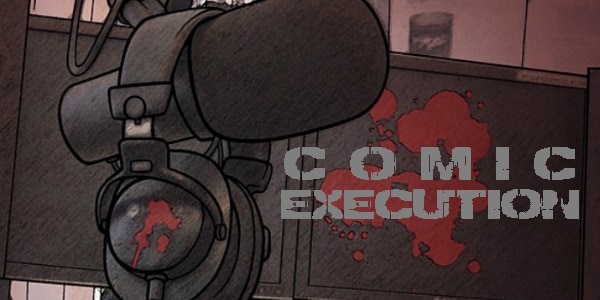
[Comic Execution] 1/31 – ‘A VOICE IN THE DARK’
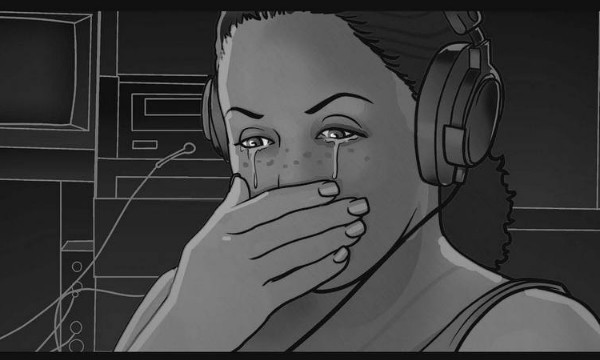 Welcome to a special edition of Comic Execution. As you may have read in the preface of last week’s column, I planned to spend this week’s column discussing, in depth, not just the latest issue but the entire run of Larime Taylor’s A VOICE IN THE DARK. But, on the off chance there are some complaints about your weekly dose being subverted for such a malevolent purpose, let me reassure you that I had already checked to see what would be on the shelves this week before I planned this and, as luck would have it, there’s no ongoing series or debuts to write about anyway.
Welcome to a special edition of Comic Execution. As you may have read in the preface of last week’s column, I planned to spend this week’s column discussing, in depth, not just the latest issue but the entire run of Larime Taylor’s A VOICE IN THE DARK. But, on the off chance there are some complaints about your weekly dose being subverted for such a malevolent purpose, let me reassure you that I had already checked to see what would be on the shelves this week before I planned this and, as luck would have it, there’s no ongoing series or debuts to write about anyway.
So why, you might ask, A VOICE IN THE DARK? The reasons are numerous but Larime Taylor’s interactions with me on Twitter barely factor into it. No, what spurred my desire to write so lengthily on the series is the fact that it’s not just a horror comic that perfectly fits in with what DESTROY THE BRAIN is all about but also because Larime Taylor is dealing with a phenomenon that happens too often; his series has amassed a sizable amount of critical acclaim yet I don’t see anyone besides critics reading or talking about it. Trying to parse out why hurts my brain. Is it because it’s mostly women who aren’t in sexy outfits? Is it because it’s in black and white? HELP ME UNDERSTAND WHY YOU AREN’T BUYING THIS COMIC.
Seriously though? Reality check: you probably don’t want to actually read my stupidly long overview of why you should be reading A VOICE IN THE DARK, even though I think what follows is the best thing I’ve written for this site and I actually bothered to have someone proofread it. So I’ll make you a deal; you can skip the whole essay so long as you go buy the the comic. I don’t care if you only buy one issue, I don’t even care if you get it for cheap ($1.99!!) at Comixology. And if you can’t even be bothered to do that, then share this article on your FB or Twitter or Snapchat or whatever you kids use these days. Hell, you don’t even have to share the article, just tell your friends about A VOICE IN THE DARK. And if you’re a comic book artist, writer, professional, whatever; WHY AREN’T YOU TALKING ABOUT THIS BOOK??!! SHAME ON YOU.
Despite not being nearly as worldly as I’d like to believe, I often worry that I’m getting jaded. Not in the sense that nothing is as quality as it was; I’m not conceited enough to believe that things in the past were somehow better than what I get to experience now. But I do feel like fewer and fewer things strike me as profoundly unique anymore.
I’m proud to say that Larime Taylor’s “A VOICE IN THE DARK” is the first truly fresh thing I’ve stumbled onto in the past few years. The last time a comic book hit me this hard was when I read Michel Fiffe’s “Panorama” in 2007, when all I was reading were webcomics due to there being no local comic shops. “Panorama” was a sublime mix of modern ennui, transgressive sexuality and body horror that was both frightening and psychedelic. But it was the deep vein of emotion that ran through it, an unnameable unhappiness which really pulled me in. It was sometimes painful to read, but I loved it for being the first truly intense non-superhero comic I’d ever read.
It wasn’t until the second issue of A VOICE IN THE DARK that the potent, subterranean darkness of Larime Taylor’s writing emerged to cast an icy needle into my veins with its eyes full of tears and a smoking gun. But it wasn’t just a single moment that came to define what I genuinely love about A VOICE IN THE DARK. Akin to a GODSPEED YOU BLACK EMPEROR song, the intensity of the blow came from Taylor’s masterful weaving of a twisted web.
I have to avoid using the term “protagonist” when referring to the main character, Zoey. The surface “hook” of A VOICE IN THE DARK is that Zoey often imagines killing a lot of people but, more importantly, that this imagining just isn’t good enough for some. We’ve all occasionally speculated on an act of homicide, but not a day goes by that she doesn’t feel a genuine urge to enact those fantasies. I interpret her character as being a sort of amplification of the natural feelings we all have in those moments of anger or frustration. A Mr. Hyde in the skin of a somewhat normal young woman if you will.
The novelty of seeing a would-be serial killer from the perspective of the main character is not a particularly new one; ‘Maniac’, ‘American Psycho’ and ‘Dexter’ all exemplify this trope, but Zoey is different enough from her predecessors that it feels like a separate ballgame. Unlike Dexter or Bateman, Zoey’s impulses rarely extend beyond dissociative fantasies and her everyday life indicates that she’s much better adjusted, to the point where she seems more akin to a healthy person occasionally plagued by psychopathic episodes. Even her inner monologues are generally more self-aware than would be expected for a death-dealing maniac.
As a result, the moments when she does struggle with that inner darkness we feel like there’s much more at stake. Because her life is so mundane, it makes her inner-conflict seem almost uncanny. A standout moment in the first issue occurs as Zoey argues with herself in the mirror. Aside from hitting a little close to home, it also shows how well-versed Taylor is in digging out the truly horrifying parts of being crazy. Not that the “hits close to home” bit means I’m crazy, but I’ve always had a streak of narcissism which happens to be a defining feature of sociopathy, often manifesting with an obsession with mirrors and the other self.
Throughout the first issue, Taylor expertly juggles the heavy exposition needed to firmly plant Zoey’s narrative in the just-slightly-askew world she lives in with the moments of dissonance necessary to elevate the story above a slice-of-life piece. But the genius of Taylor’s writing doesn’t end with just these two elements. No, occasionally he pulls of flashes of brutal black comedy that I honestly have nothing in my experience to compare to. Most of this is all established in the first issue, which led me to believe I was reading something pretty mundane, if unexpectedly clever.
The second issue is where Taylor truly pulled the rug out from under me. I do admit I feel a bit stupid in retrospect by how oblivious I was, because the cover of that issue is much more striking than it first appears. All it takes is a moment of looking at Zoey’s face and the tears she cries become more ominous, and then you wonder; what’s she hiding behind her hand? A frown? A smile? Or maybe she’s just crying mechanically and, like her eyes, there’s no emotion to be had in her expression. Very clever, especially given that none of that makes a lick of sense until you’ve hit the last page. There’s almost no comedy in this issue, just a slow, methodical, sickening escalation of the mundane awfulness Zoey’s being informed of.
It’s difficult to build suspense in comics. It’s easy in movies or video games; move the camera a certain way, creep the volume of the score, etc. In a comic, you have to rely on your words and the imagery to do so. Taylor chooses an unorthodox and surprisingly effective tactic; text messages. In the conversation Zoey has with her uncle in the police force as they try to halt the impending tragedy, Larime really bangs home foreshadowing that you don’t really pick up on right away. It’s not until too late you realize what was horrifyingly inevitable. And it’s not just the all-too-real results, but the conclusion that Zoey comes to regarding her own participation in the act, one the reader can’t help but see the eerie logic in.
From the moment Zoey pulls the headphones away from her head, there’s a sad, deep darkness that I might be amplifying because of the intensity of the scene, but still hit me hard when I first read it. It’s not a level of angst I ever tend to experience in comics, usually exclusively in music or film. Her immediate conclusion about the fate of the character in question is incredibly gut-wrenching.
It’s horror. It’s not spooky horror, or thriller horror. It’s real horror, the one we overlook in this country constantly; private violence. We’re so fascinated by public killing sprees because that’s easier to imagine than taking a gun to the people you call your family and friends. Because that’s a line that, no matter how hard we’re pushed, most of us could never even imagine crossing. The “fridge” horror of it is that what caused her to do this is neither something impossible or supernatural, but disgustingly and unsettlingly likely.
The first arc of A VOICE IN THE DARK is called “Blood Makes Noise”, a title I absolutely love because A) it’s the name of a great song by a relatively unknown female singer/songwriter from the ‘90s B) it’s just a really evocative title. There’s a great undercurrent of “weird” music throughout Taylor’s work; Zoey’s first radio show even opens with a lesser-known Leonard Cohen tune! These are the things you don’t notice on the first read because Taylor gets you so involved in the tale but there’s a lot of value to rereading each issue, if even just for a second time.
When the first arc ended, I wondered where the series would go from there, because the denouement of the second issue was so huge. But there’s also a mystery lurking at the edges of Zoey’s story; from issue one, it’s clear she’s not the only serial killer in town. Now the new arc has begun, titled “Killing Game.” Now, given that that’s the name of a Skinny Puppy song from their ‘92 album ‘Last Rights’ and that album came out the same year as the Suzanne Vega album with “Blood Makes Noise” on it, I’m going to assume it’s not a reference to a French film from 1967. Like ‘Blood Makes Noise’, the title of his new arc is a succinct depiction of the tale so far. That murderer that’s been lurking in the background finally gets more face time and, with it, the tone of the book changes a bit. Again, Taylor wisely drops a very foreboding prologue in, but it actually takes a second read before the truly worrying aspect of it becomes obvious. Whatever the arc is going to lead up to, it’s going to be MORE intense than what has come before and that’s thoroughly exciting in the most wrong way.
Have you picked up on it yet? What I’m trying to show you about Larime Taylor’s writing? No? Give it a while, I’ll come back to it.
So what about this new issue? How does it stack up against the previous ones that affected me so? It actually does feel, against my better judgement, a bit more tedious than I would prefer, but I think that’s actually my fault. See, there’s a whole six pages of women talking to each other about themselves and their lives. That’s not to say that nothing relevant to the story gets said; we learn some important details about the setting where the story takes place, we get an alibi of sorts for each of Zoey’s roommates (though it doesn’t rule any of them out completely) and there’s some commentary on the nature of class divide in academics. But I couldn’t help but be a bit bored by the scene. I guess I kept waiting for Zoey to imagine killing one of them but I also think that Larime is doing the right thing here by having one of the most impossible things happen in a comic book; women talking to women.
I mean, I can’t believe I’m saying this, but the part of this comic I found the most tedious is a thing we seriously desperately need more of, because it’s the only time I personally can recall from a comic that more than two women had a conversation with each other without being in superhero costumes. I can definitely testify that it’s the first time FOUR women talked to each other in a comic, ever. So my biggest complaint about this issue is the one I desperately need to point out to the most overlooked yet significant portion of mainstream comics’ readership; women.
“But Chris,” you ask (just run with it) “How do you know it’s not just boring dialogue that’s causing you to lose interest and not the fact that it’s specifically girls talking to each other?” I thought about that and did a thought experiment of sorts. I imagined if one of the girls was replaced by a character from my demographic; a queer male. And while I don’t entirely exclude my own cynical self-evaluation from influencing my conclusion, I do believe that I would’ve been far more invested in that scene had this been the case, which is frustrating. I think it’s human, to a certain extent, but it’s not a trait I’m fond of. I should find that scene immersive regardless of the gender or sexuality of the characters within it.
But let’s move on from that precarious topic to the the part of A VOICE IN THE DARK #3 that triggered this whole article. The last few pages are something that’s been bubbling up deep beneath the surface of the series and it finally surges forth in the form of a delightful homage to the first-person slasher menace of “MANIAC” and other classic grindhouse sleaze that use the camera as their villain’s POV. Taylor goes through the motions, complete with dumb sexy blonde girl (a model!) letting the faceless killer into her dorm room. I absolutely love how Taylor lets his eye for satire loose; she actually uses the word “undies” at one point, AND ASKS HIM IF HE WANTS TO LISTEN TO LOUD MUSIC. But that’s not even the funniest part of the whole scene, which I won’t spoil. But when the killer inevitably “whips out” his knife (which looks precisely like the kind of knife someone would overcompensate with) it’s accompanied by a blackly hilarious riff,and don’t think I didn’t notice the phallic imagery! The lesson here, kids? DON’T LISTEN TO “BOOM-TISS” WITH STRANGERS.
Now the first time I read this, as much as I loved it, I had a “well that was out of left field” feeling that didn’t last long; Taylor’s just done such an excellent job of keeping the reader wrapped up in Zoey’s struggle that we’d almost forgotten the “other” serial killer subplot which actually went through all the right cues; a ritualistic and gruesome murder scene investigated by police, a news article detailing her mysterious death, characters explaining how the area is known for being rife with killings, etc. And the girl who gets killed might be a bit more over the top in her characterization, but not by much if you look at how others are portrayed. The scene definitely is a bit of a jolt but I welcomed it because, thanks to the prologue, I know it’s going to lead to more development for Zoey.
So I did have one problem with the new issue but it was one I can’t attribute to the writer. What I can however attribute to Larime Taylor is one of the rare few debuts that has immediately grabbed me by the throat. He’s not just doing something unique, he’s doing it with incredibly skilled storytelling I rarely see outside a Brian K Vaughan or Kelly Sue Deconnick book, both of who have some really intriguing titles but NOTHING quite this brave or relevant.
The art is going to be a footnote. Yes, it is, and I don’t care what Larime Taylor thinks of that. My excuse is that I’m a writer. I appreciate comics for their writing. Don’t get me wrong, bad art can HELP ruin a book but it will not solely drive me away from excellent writing. I like to think of Larime Taylor as being a lot like Jeff Lemire or Matt Kindt when they both first started drawing their own scripts. No, they didn’t have the range or flexibility of a pro at the time and it probably hurt some of what they wanted to do. But they adapted and they learned. And we’re seeing Taylor do that now. It’s actually kind of cool to see how much improvement has happened between the first and third issues. By now I have no complaints about the art. It’s not as good as I want such a well written title to be but I’m also starting to appreciate that its realism and smoothness helps put a focus on the dialogue and story.
But that’s not even to say that his art doesn’t accomplish more than what it needs to, particularly in the last scene of the comic, when the killer has his blade in hand. The way that panel is layered and the expression the girl has, as well as the positioning of the blade, is definitely the strongest visual outside the prologue. Interestingly, it might also be the most controversial part of the comic, which I’d suggest is no coincidence. Regardless, I hope to see more cinema-minded shots like these in later issues but considering how much Taylor has grown in such a short amount of time, I’m eager to see how good issue five will look.
The first two issues of A VOICE IN THE DARK are on Comixology for $2 each. That’s the whole first arc for $4, the average price of a DC/Marvel comic. Go read it. You don’t need a tablet to read Comixology issues and I promise, reading it on your desktop/laptop won’t ruin the experience. If you like horror, you need to read it. It will shock you. And, if you’re like me, maybe you’ll feel something deeper. Maybe it’ll make you sad, too.

